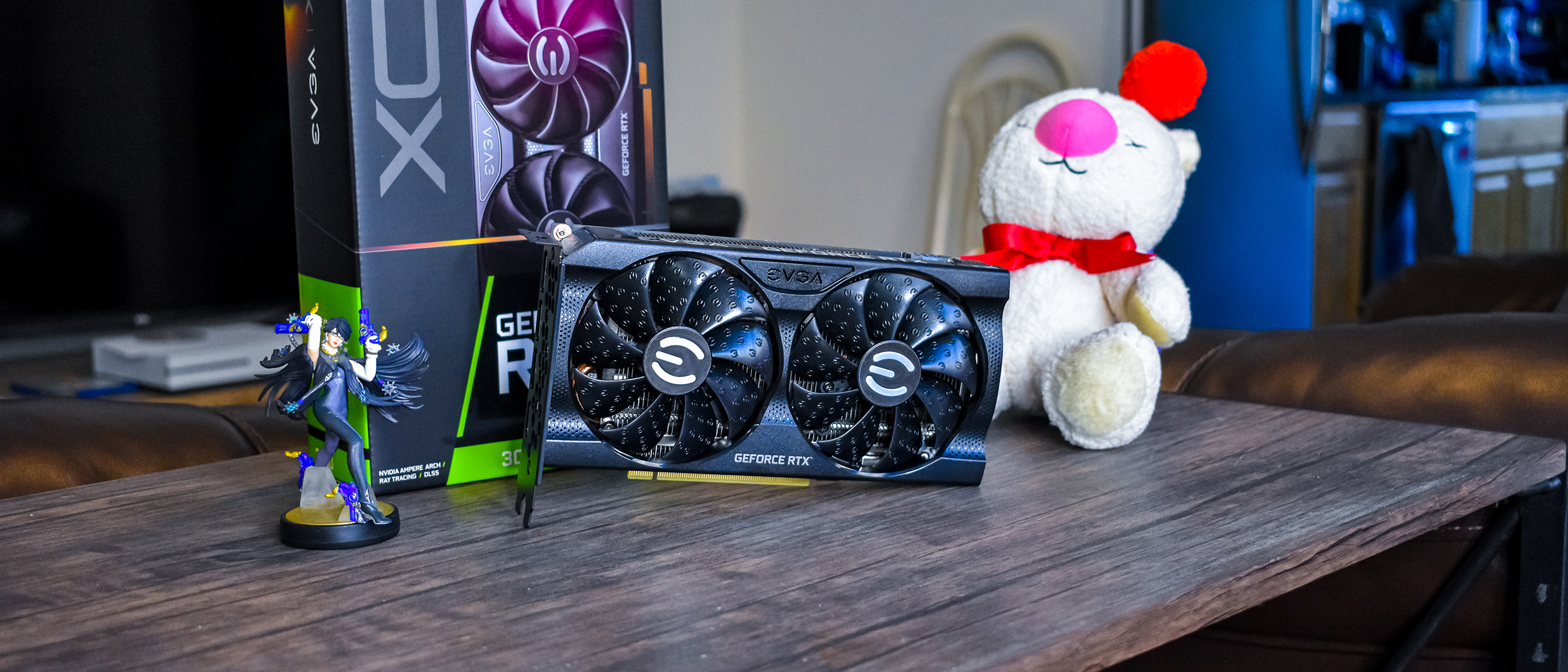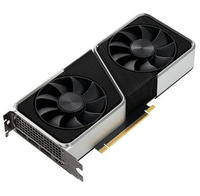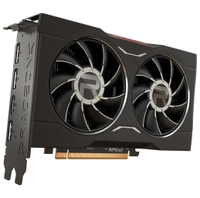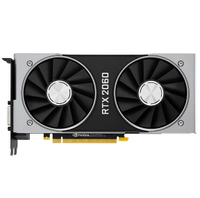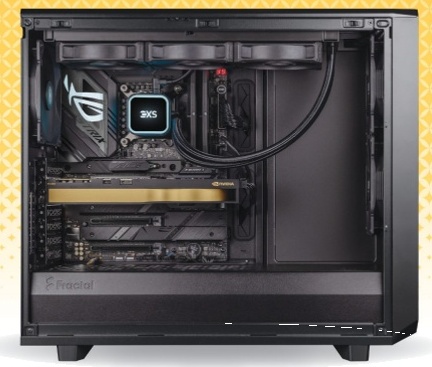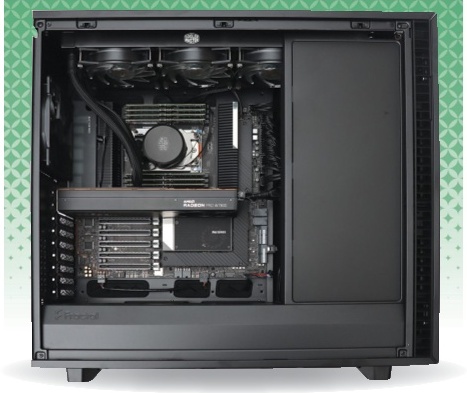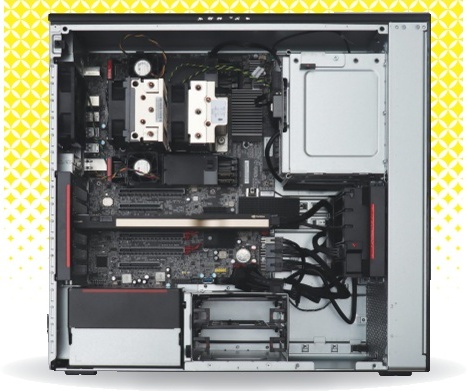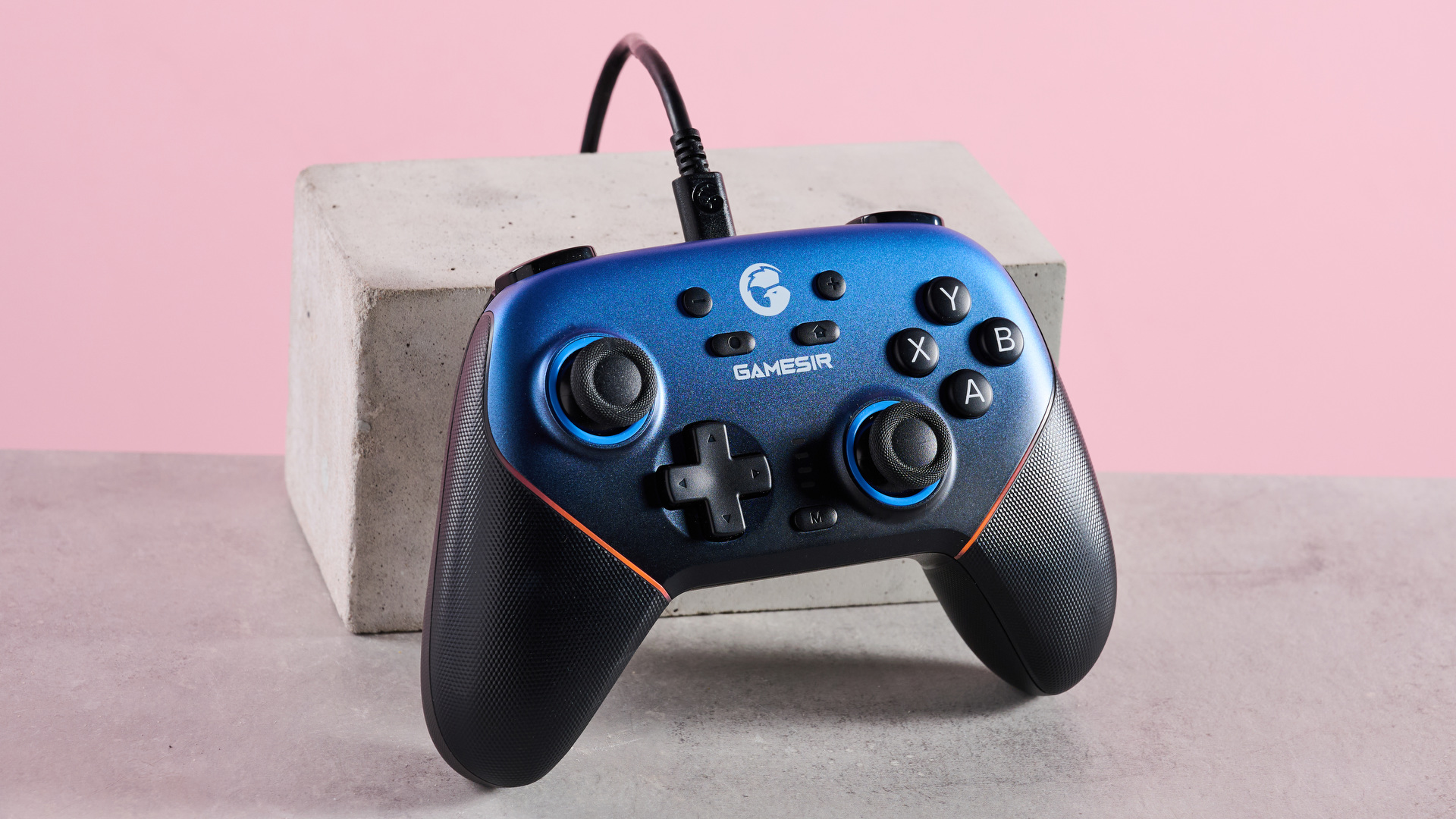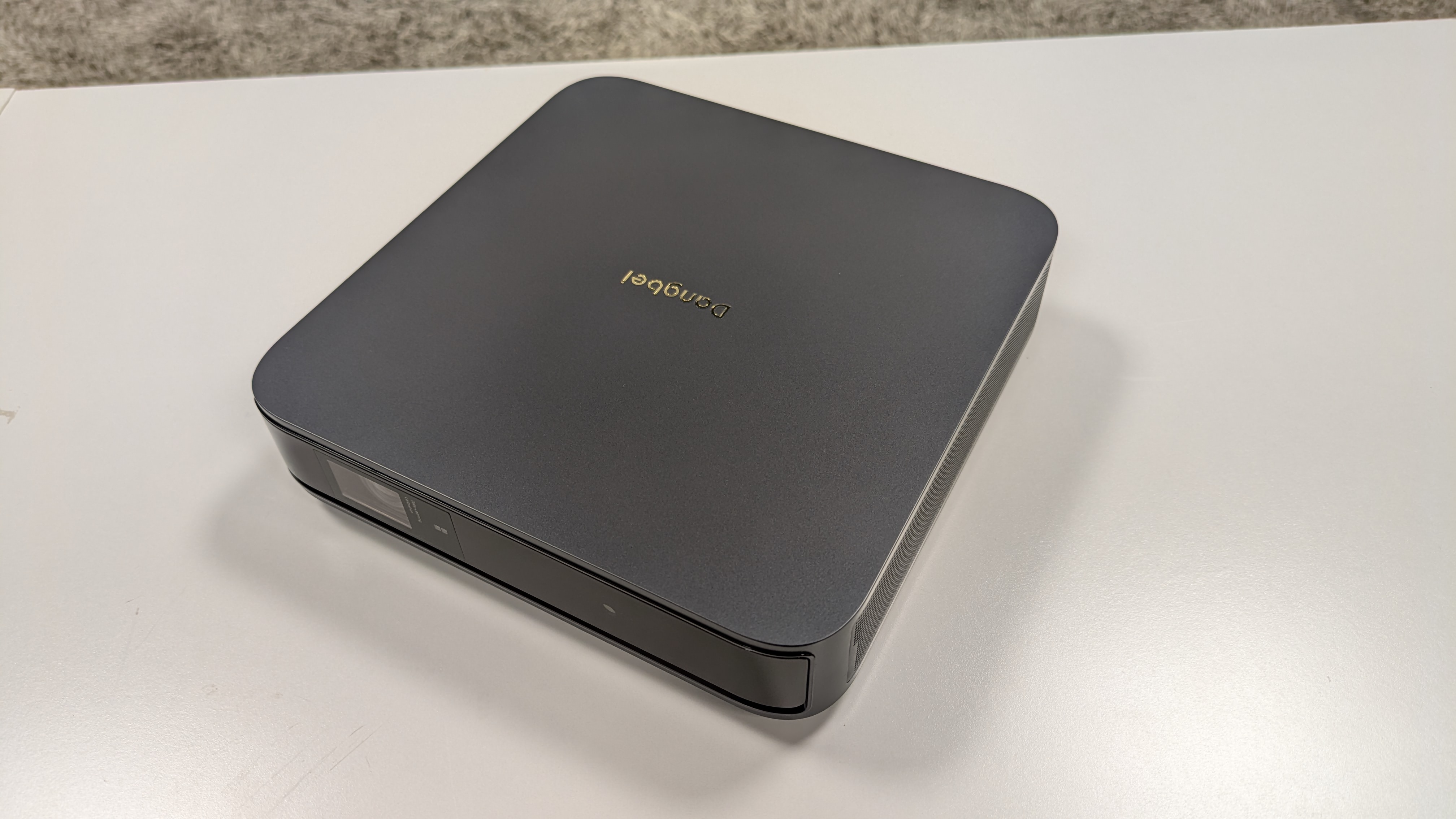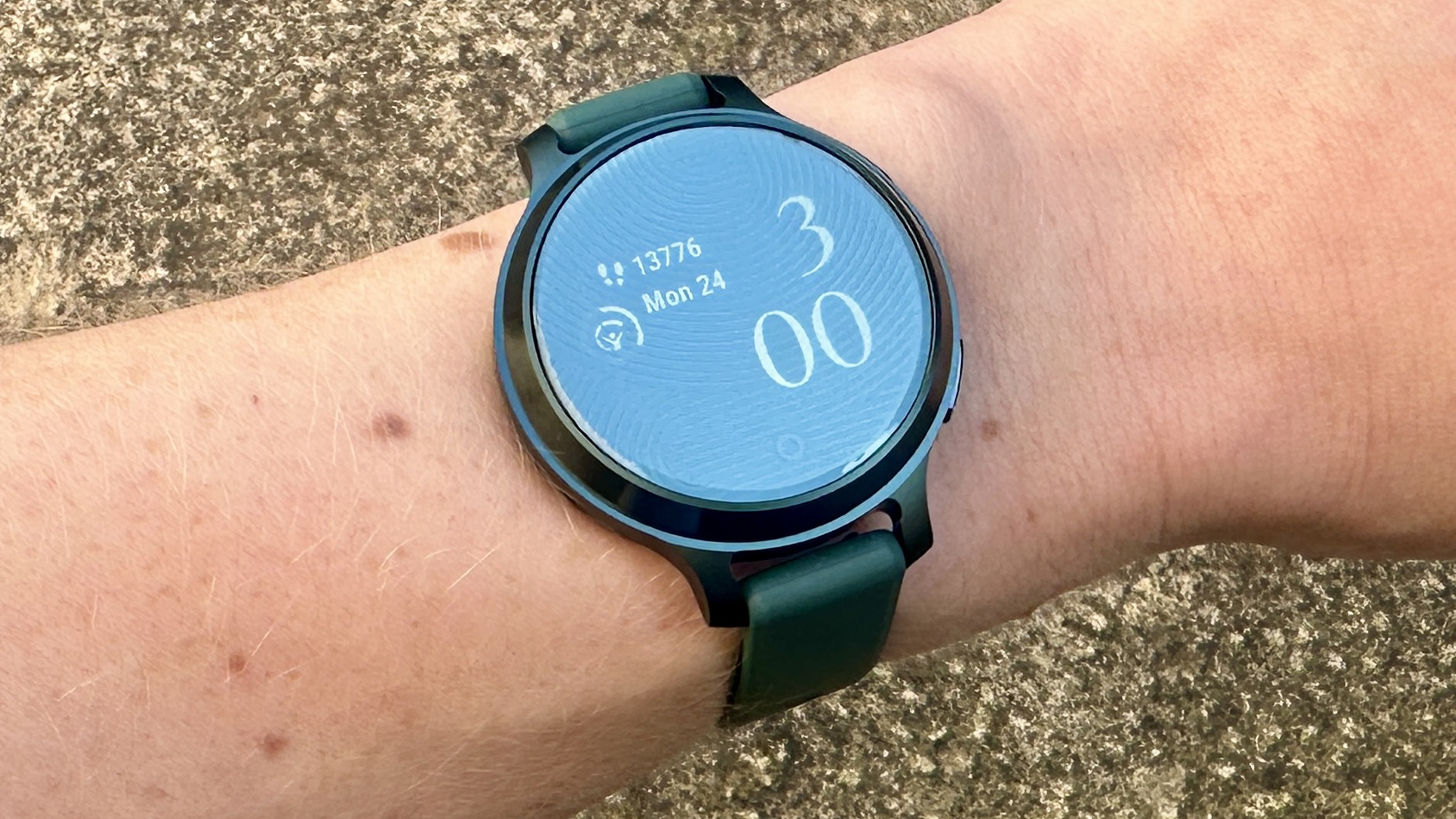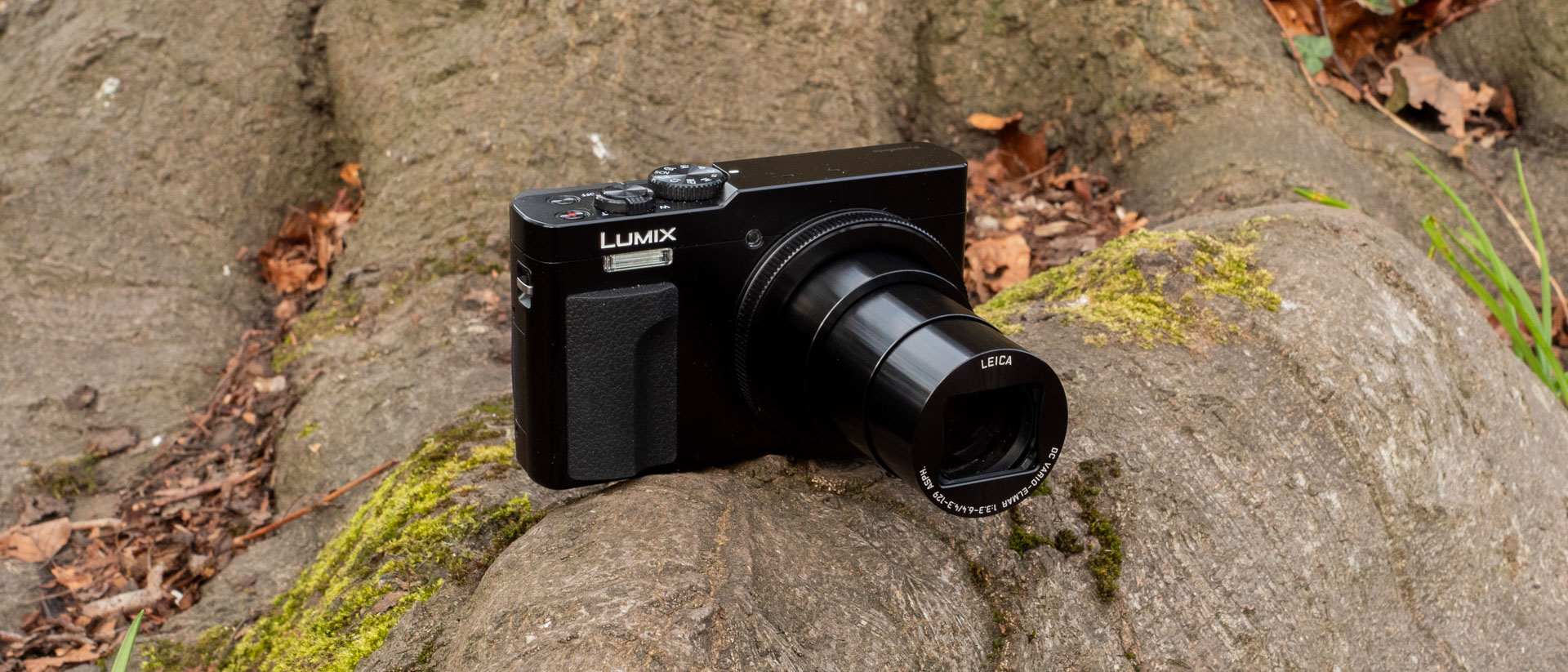TechRadar Verdict
The Nvidia GeForce RTX 3060 delivers a huge improvement for 1080p gamers that just want solid performance without breaking the bank. However, the increase in price over the RTX 2060 and its proximity to the RTX 3060 Ti in pricing makes recommending the Nvidia GeForce RTX 3060 complicated.
Pros
- +
Good 1080p performance
- +
Will fit in small PC cases
- +
Low power consumption
Cons
- -
A tad expensive
- -
Unnecessary VRAM
- -
Lags too far behind RTX 3060 Ti
Why you can trust TechRadar
Nvidia GeForce RTX 3060: Thirty second review
The arrival of the Nvidia GeForce RTX 3060 makes Nvidia’s Ampere architecture finally available in the budget market.
At $70 (about £50, AU$90) cheaper than the card in our Nvidia GeForce RTX 3060 Ti review, this budget GPU is targeting consumers who can’t or are unwilling to shell out $400/£400 or more on a graphics card. That includes GTX 1060 users who’ve been waiting for the right time – and price – to upgrade to the current generation.
In our Nvidia GeForce GTX 1060 review, we found it to be among the best graphics cards for its price-to-performance ratio, and that still holds true – which is why it's still the most abundant card available on the market to this day, per the Steam Hardware Survey.
This is really Nvidia's core target audience for the Nvidia GeForce RTX 3060 – even if it does come with a higher price tag. The GTX 1060 has been on the market for almost 5 years after all, having made its auspicious debut back in August 2016. And, it has a fraction of the speed of the RTX 3060.
Nevertheless, it wouldn’t be an easy sell. The GTX 1060 is not only still capable of tackling plenty of the best PC games coming out, but it remains to be the cheaper proposition. Meanwhile, the RTX 3060 Ti offers the kind of added performance that makes the extra cost more than worth it.
Nvidia GeForce RTX 3060: Price and availability
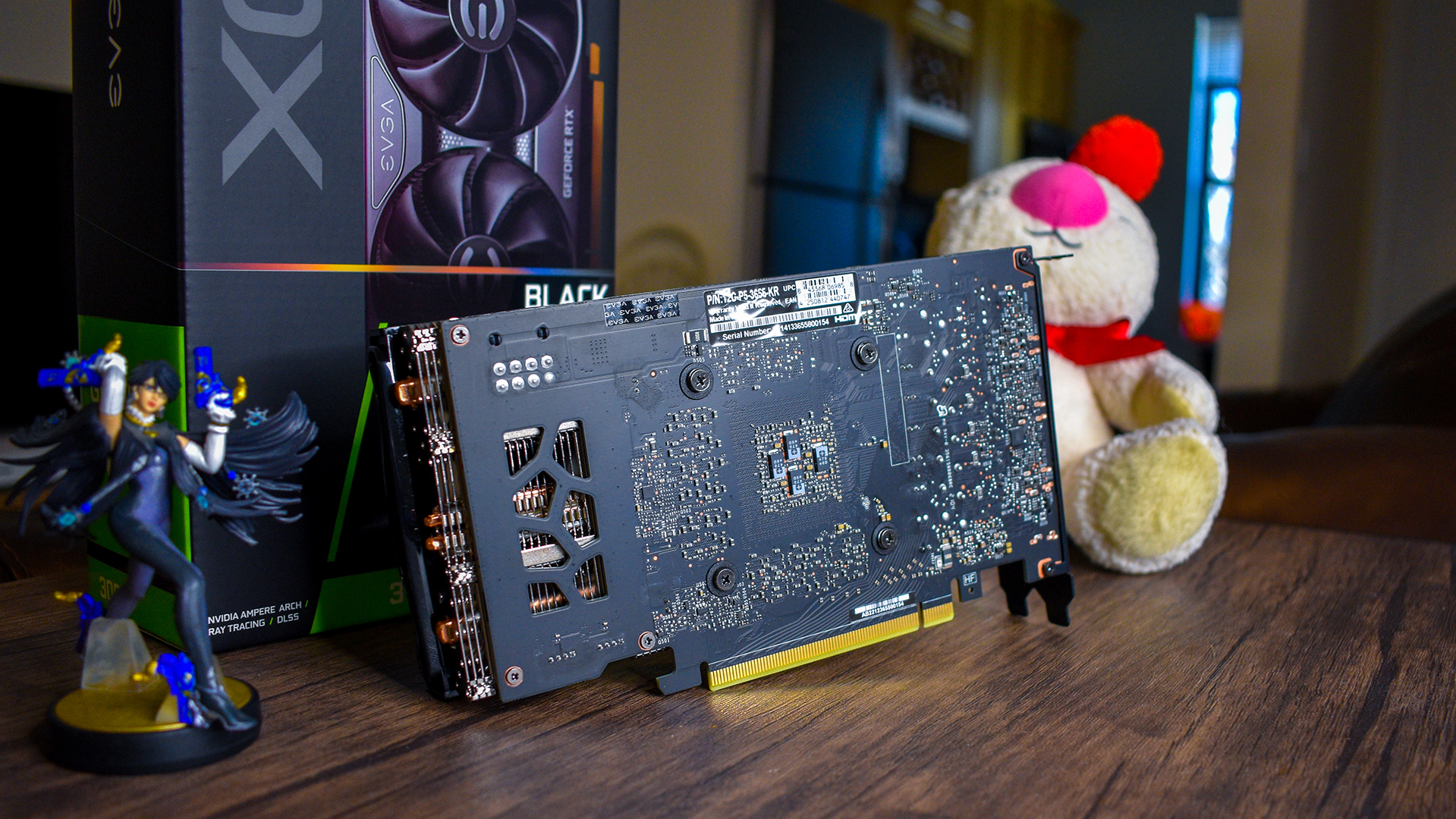
- Cheaper than RTX 3060 Ti, but not as good of a value
- More expensive than the RTX 2060 was when RTX 2060 Super launched
The Nvidia GeForce RTX 3060 launched on February 25, 2021, starting at $329 (about £240, AU$430). The pricing is a little bit complicated, though. Unlike previous entries in the Nvidia Ampere lineup, Team Green is not releasing a Founder’s Edition of the RTX 3060 – much like what it did with the GTX 1660 Ti back with the Turing lineup.
So, while the EVGA GeForce RTX 3060 Black XC we reviewed here will sell for $329 (about £240, AU$430), there will be a whole range of Nvidia RTX 3060 graphics cards. There will be some RTX 3060 cards with elaborate cooler designs, boasting better overclocking capabilities and may even be overclocked out of the box.
Those cards will likely perform faster than the EVGA GeForce RTX 3060 Black XC, but only by a marginal amount – and may not be worth the added expense.
Nvidia is specifically aiming the RTX 3060 to gamers that have stuck to the Pascal-based GTX 1060 since its 2016 launch. This makes sense, given that upgrading your graphics card with every other generation seems to be common, but prices have changed drastically since 2016.
The Nvidia GeForce GTX 1060 launched for $249 (£238, AU$429) – significantly less than the $329 (about £240, AU$430) RTX 3060. Even before the GPU shortages that are ongoing at the time of writing, that’s a pretty massive price bump that some GTX 1060 users might not be able to justify.
Then, on the other side of it, the Nvidia GeForce RTX 3060 Ti is an extra $70 (about £50, AU$90) at $399 (about £299, AU$540). That’s a pretty hefty price jump, but if you’re already breaking the $300 / £300 / AU$400 mark, you might as well get something that will give you the best experience you can get. It’s hard to nail down exactly who to recommend this graphics card to, especially since we assume Nvidia will be launching budget Ampere cards at some point – and everything will be sold out for a while still.
Nvidia is trying to combat the appeal to cryptocurrency miners with the RTX 3060, though, with a combination of hardware and software to cripple its hash rate. It remains to be seen whether or not this will help keep the price of the card low, but we hope it does. Once this card starts seeing its price rise closer to the RTX 3060 Ti, its value rapidly diminishes.
- Value: 3.5 / 5
Nvidia GeForce RTX 3060: Features and chipset
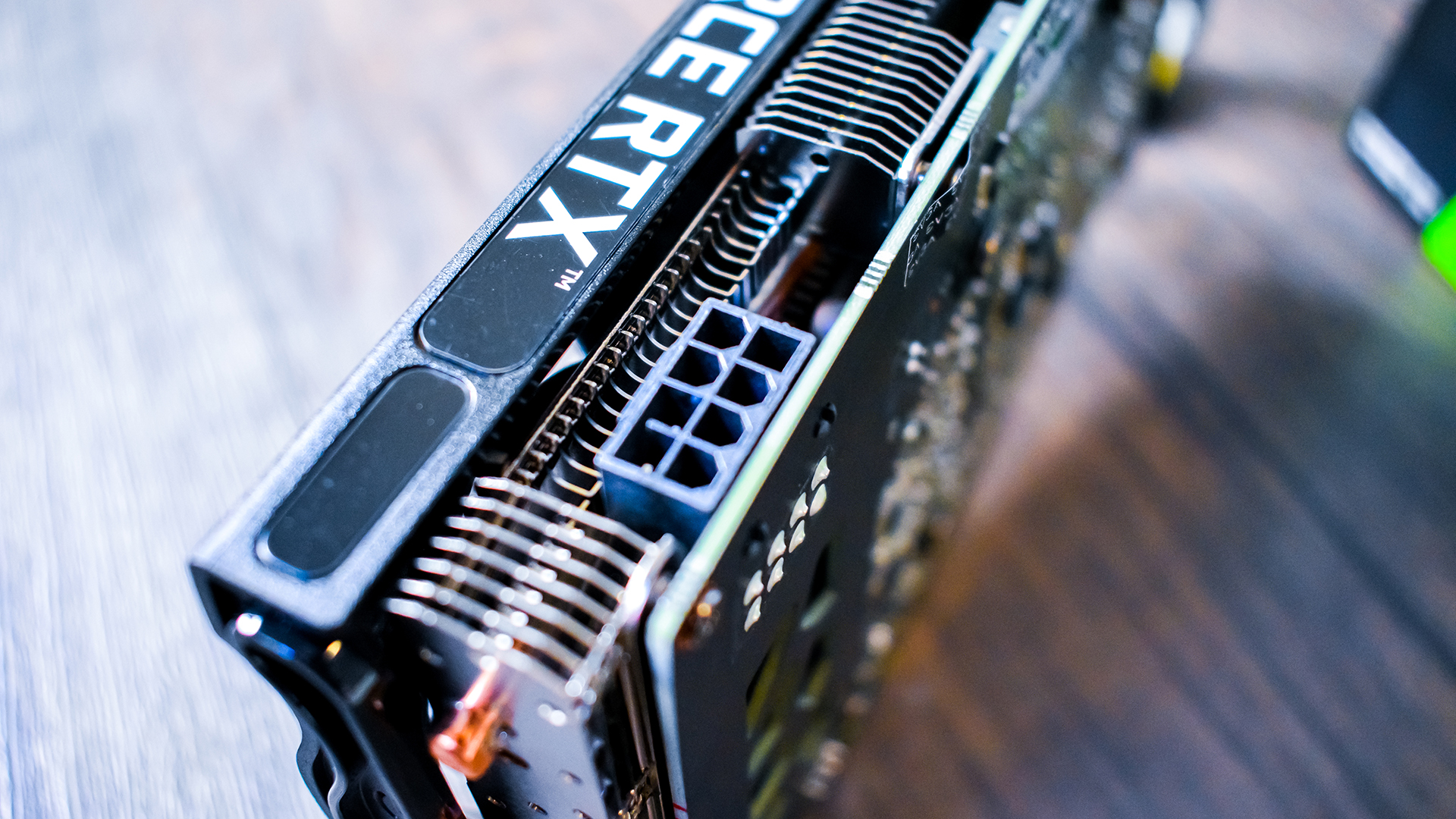
- More CUDA cores
- Way more VRAM than it needs
- Represents a substantial jump from GTX 1060
GPU: Nvidia GA106
Stream multiprocessors: 28 (128 CUDA per SM)
CUDA Cores: 3,584
Tensor cores: 112
Ray tracing cores: 28
Power Draw (TGP): 130W
Boost clock: 1,777MHz
VRAM: 12GB GDDR6
Memory Speed: 15Gbps
Interface: PCIe 4.0 x16
Power connector: 1 x 8-pin
Like the rest of the Nvidia RTX 3000 series graphics cards, the GeForce RTX 3060 is based on Nvidia’s new Ampere architecture. With the move from Turing to Ampere Nvidia brings more than just a higher product number to the table.
The biggest change in Ampere is in the Streaming Multiprocessor’s (SM) datapath. Where previous generations had separate pipelines for Integer and Floating Point 32 (FP32) workloads, Nvidia has effectively doubled the amount of cores that can handle standard FP32 work – which just happens to be incredibly important for gaming performance. Because of this, the amount of CUDA cores per SM has doubled to 128, rather than the 64 found in something like card from our Nvidia GeForce RTX 2060 review.
This means that while the RTX 3060 actually has fewer SMs at 28 than the RTX 2060 with 30, CUDA core count jumps to 3,584 on the RTX 3060 over the last generation’s 1,920. That’s a massive boost, and a major reason why the RTX 3060 sees such an increase in gaming workloads.
And if you go even further back in time to the Nvidia GeForce GTX 1060, the users of which Nvidia is heavily targeting with the 3060, the old Pascal-based favorite is packed with just 1,280 CUDA cores.
The scaling here isn’t perfect, however, but thanks to this massive difference in the amount of shaders available to the RTX 3060, it is able to achieve double the performance of the GTX 1060 in many games.
The Nvidia GeForce RTX 3060 also comes equipped with 12GB of GDDR6 VRAM on a 192-bit bus. And, well, it’s a bit odd that this graphics card has such a gargantuan amount of memory available to it.
Putting this much VRAM into a graphics card that’s meant for 1080p gaming simply doesn’t make much sense, and is probably the reason that the graphics card is sitting at such a weird price point – at $329, instead of the $299 price point that the Nvidia GeForce RTX 2060 sold for once the RTX 2060 Super launched in July 2019.
The graphics card doesn’t perform especially well at 1440p, and at 1080p many games aren’t going to push into requiring 12GB of VRAM for a long time to come. There are some titles that will utilize more than 8GB, but you don’t really gain a noticeable boost in performance if you don’t have that.
Nvidia tells us that it ended up going with 12GB of VRAM because with the 192-bit memory bus, the GPU could be loaded with 6GB or 12GB of memory, and the company wanted to provide users with the most memory that the GPU could offer. We applaud that decision, but we can’t help but wonder why that decision was made here and not with the cards in our Nvidia GeForce RTX 3080 review or Nvidia GeForce RTX 3070 review, where more VRAM could definitely help at 4K.
And you really can’t talk about Nvidia Ampere without talking about ray tracing and Deep Learning Super Sampling (DLSS). Both of these technologies are supported by the RTX 3060, though the smaller GPU means that there is less dedicated hardware for RT and DLSS workloads.
But, the smaller amount of RT cores shouldn’t really be a problem, especially at 1080p. What’s more important than ray tracing here, though, is the DLSS. For a graphics card in this segment, the ability to squeeze out a little more performance at 1080p is going to be a win no matter how you look at it. It can genuinely mean the difference between 45 and 60 fps, even with ray tracing enabled in many games.
And, with how good the DLSS 2.0 algorithm has become, our advice is to turn it on whenever it’s available in the game you’re playing. We’d even go so far as to say that, DLSS is the single biggest reason to choose a graphics card from Team Green, rather than going with Radeon, though AMD's competing FidelityFX Super Resolution is starting to deliver on some of its promise.
- Features: 4.5 / 5
Nvidia GeForce RTX 3060: Design
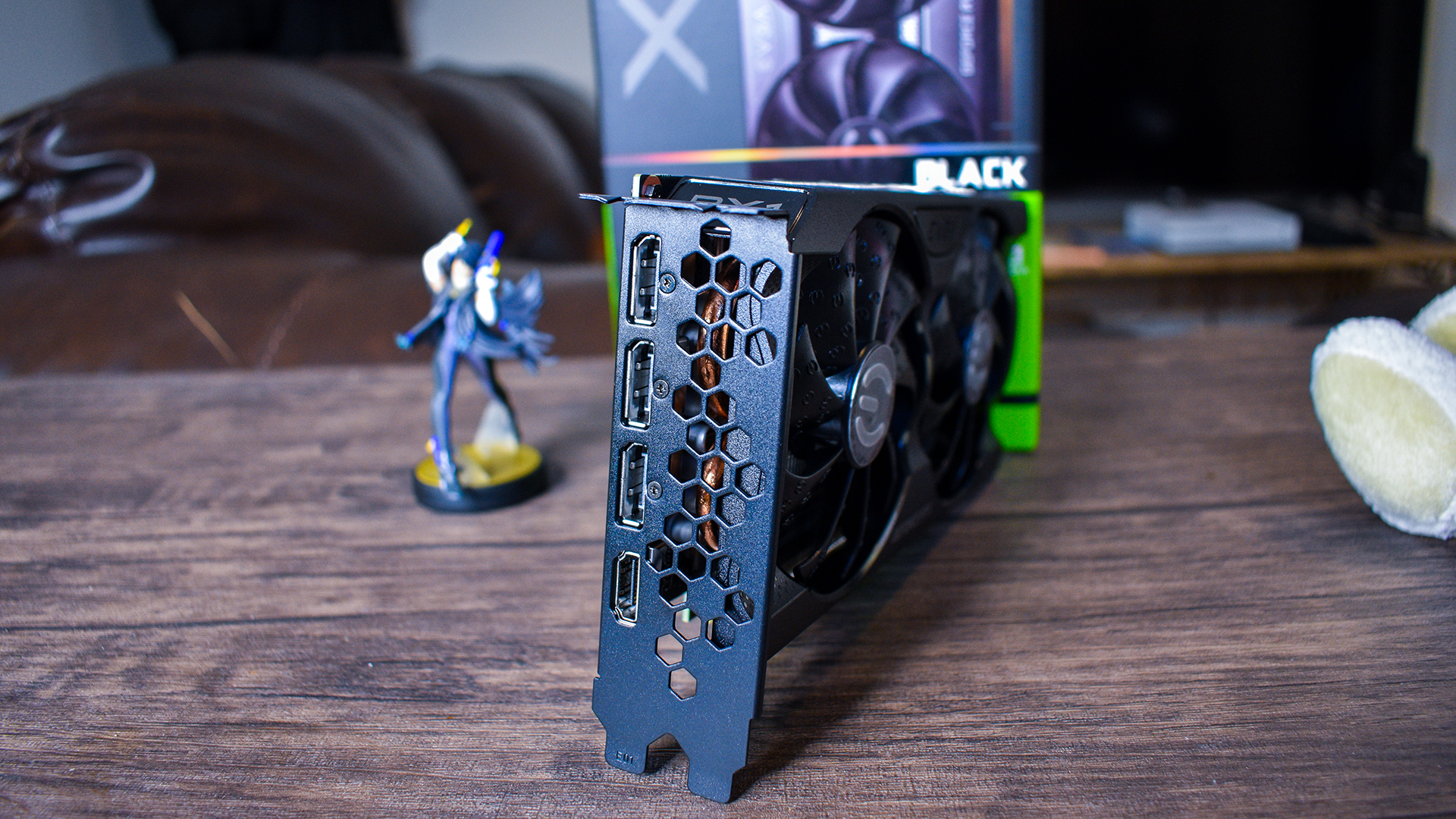
Because the EVGA GeForce RTX 3060 Black XC is one of the less expensive versions of the Nvidia GeForce RTX 3060, it’s a pretty basic graphics card. You won’t find any flashy RGB lighting or custom backplates, but that simplicity works in its favor.
The graphics card has two fans, fitted with the EVGA logo, and are placed over a heatsink that extends just a tiny bit over the PCB. It’s the kind of graphics card design you’ve seen hundreds of time, but thanks to its simple black colorway, it’s a graphics card that will fit in any PC build.
The EVGA RTX 3060 Black XC is also exceptionally small. It is still a dual-slot card – single slot graphics cards probably won’t be coming back – but it’s incredibly short. At just 7.94 inches (201.8mm) long, you should have no problem fitting this graphics card in any PC case. With how big some of the RTX 3000 graphics cards have been getting, it’s incredibly refreshing to see a GPU that you could feasibly fit in a mini-ITX case without too much effort.
It’s powered by a single 8-pin PCIe connector, which means you don’t need to worry about an unsightly 12-pin adapter. Again, another benefit for users that want to build in a smaller case. I/O is also incredibly simple, with three DisplayPorts and one HDMI 2.1 port.
There’s still no USB-C video output here, and we still think it’s a shame. With how important GPUs are becoming to creative professionals for everything from photo editing to 3D modeling, it’s a pity that the most recent Nvidia graphics cards have dropped support for USB-C video output.
- Design: 4.5 / 5
Nvidia GeForce RTX 3060: Performance



























- Doubles the performance of GTX 1060
- Great budget PC card (except for the price)
This is the system we used to test the EVGA GeForce RTX 3060 Black XC:
CPU: AMD Ryzen 9 5950X (16-core, up to 4.9GHz)
CPU Cooler: Cooler Master Masterliquid 360P Silver Edition
RAM: 64GB Corsair Dominator Platinum @ 3,200MHz
Motherboard: ASRock X570 Taichi
SSD: ADATA XPG SX8200 Pro @ 1TB
Power Supply: Corsair AX1000
Case: Praxis Wetbench
With the RTX 3060, Nvidia is hoping to convince folks that have been holding onto their GTX 1060 to finally make the upgrade, claiming that the new card boasts double the performance. And, well, Nvidia is right.
Throughout our testing, the RTX 3060 sits somewhere between 80-120% faster than the GTX 1060. The only game where it doesn’t see that much of an improvement is Assassin’s Creed Valhalla, and that game doesn’t exactly have the best GPU scaling.
When the Nvidia GeForce GTX 1060 launched way back in 2016, it became hugely popular because it was affordable and could easily play all the hottest games at 1080p with 60 fps. However, over the last few years, that rock-solid performance continued to wane, as games became more graphically intense. And, now, with games like Watch Dogs Legion, Cyberpunk 2077 and Dirt 5 really pushing the boundaries, the GTX 1060 is starting to show its age.
The RTX 3060, then, is kind of the perfect replacement. It handles next-generation games at 1080p with no problem, even with ray tracing enabled, which could give the RTX 3060 a similar legacy to the GTX 1060 if that 12GB frame buffer gives it a bit of a longer life. It’s important to keep in mind, however, that the GTX 1060 launched for $249 – nearly $100 less than the RTX 3060. That ultimately complicates things, and if you’re a GTX 1060 user, you might want to wait for whatever Nvidia has to follow the GTX 1660 instead, especially if your budget hasn’t changed.
Generally speaking, the Nvidia GeForce RTX 3060 is about 30% slower than the Nvidia GeForce RTX 3060 Ti, despite the much bigger allocation of VRAM on the non-TI card. And, given that the Nvidia GeForce RTX 3060 Ti is only about 21% more expensive than the RTX 3060 – at least before we factor in GPU shortages – that math doesn’t quite add up. In a perfect world where you can just go on Newegg and buy a graphics card at its intended price, our advice would be to just save up that extra $70 and spring for the RTX 3060 Ti.
In terms of performance, the Nvidia GeForce RTX 3060 is just kind of in a weird place. This graphics card would be amazing for budget PC builders if it was just a bit less expensive, but the price increases that came with Nvidia Turing unfortunately seem like they’re here to stay. However, if you’re on the market to build a 1080p gaming PC, it’s still probably the best value you’re going to get right now, at least until either Nvidia or AMD launch more budget-oriented graphics cards that will fill the wide gap that exists right now.
- Performance: 4 / 5
Should you buy an Nvidia GeForce RTX 3060?
Buy it if…
You want excellent 1080p gaming performance
1080p gaming is still incredibly popular, and it’s more affordable than ever before. If you want to stay at that resolution while still being able to turn on all the ray traced eye candy, the Nvidia GeForce RTX 3060 will get it done.
You’re looking to build a small form-factor gaming PC
Because the Nvidia GeForce RTX 3060 doesn’t use a lot of power, and doesn’t need a robust cooler, you’re going to be able to find plenty of versions that are small enough to fit into pretty much any PC case.
You want ray tracing and DLSS but don’t have a lot of cash
Outside of the last-generation RTX 2060, the Nvidia GeForce RTX 3060 is the cheapest way to get your hands on ray tracing and DLSS technologies – the latter of which is probably the best GPU feature in years.
Don’t buy it if…
You want a GPU at the same price as the GTX 1060
If you bought the GTX 1060 years ago because it was the most powerful graphics card within your budget, you might want to keep waiting until Nvidia fills out its lineup with more budget-oriented graphics cards.
You want to play games at 1440p
Despite what the 12GB frame buffer might lead you to think, the RTX 3060 doesn’t exactly excel at 1440p gaming, especially when you start throwing especially heavy games like Watch Dogs Legion at it. If you want to get into 1440p gaming, the RTX 3060 Ti is the better buy – even if it is a bit more money.
Also Consider
Nvidia GeForce RTX 3060 Ti
The RTX 3060 Ti is easily the best Nvidia GeForce graphics card by value and its MSRP is not that much more expensive than the RTX 3060, so if you can afford to spend a little more then definitely check out the RTX 3060 Ti.
Read our full Nvidia GeForce RTX 3060 Ti review
AMD Radeon RX 6650 XT
The RX 6650 XT is more expensive than the starting MSRP of the RTX 3060, but it is generally more available, so if you're struggling to find an RTX 3060 and you need to upgrade, the RX 6650 XT is a good 1080p option if all you're doing is gaming. This isn't a good card for creative workflows though, and its more expensive than it should be, so only consider this if better options aren't available.
Read the full AMD Radeon RX 6650 XT review
Nvidia GeForce RTX 2060
Even though it's a few years old now, the RTX 2060 is still one of the best 1080p graphics cards around. It might be harder to find nowadays, but if you can find it at MSRP or less, this is a better alternative to the RTX 3060 than the RTX 3050 in terms of performance and price.
Read the full Nvidia GeForce RTX 2060 review
Nvidia GeForce RTX 3060 Report Card
| Value | The RTX 3060 is more expensive than the RTX 2060 and for somewhat more money you can get the RTX 3060 Ti, which is the best graphics card by value. | 3.5 / 5 |
| Features | A new architecture design brings substantially more CUDA cores, and DLSS 2.0 and ray tracing are finally available at the budget range.. | 4.5 / 5 |
| Design | While the RTX 3060 Ti up through the RTX 3090 Ti are physically larger to substantially more massive, the RTX 3060 dual fan card is a perfect fit for a mini-ITX build. | 4.5 / 5 |
| Performance | The RTX 3060 doubles the 1080p performance of the GTX 1060, but it's still a bit too expensive for the performance gains. | 4 / 5 |
Originally reviewed May 2021
Jackie Thomas is the Hardware and Buying Guides Editor at IGN. Previously, she was TechRadar's US computing editor. She is fat, queer and extremely online. Computers are the devil, but she just happens to be a satanist. If you need to know anything about computing components, PC gaming or the best laptop on the market, don't be afraid to drop her a line on Twitter or through email.
